How to Measure Liquor Bottles for Inventory?
The objective of taking liquor inventory is to know the exact amount of liquor you have on hand. The best way to keep track of your liquor stock is to weigh your liquor bottles. Weighing bottles is a way of measuring the amount of liquor used during an inventory period, by weighing a bar's stock at the start and at the end of the inventory period.
A Dummy's Guide on How to Measure Liquor Bottles for Inventory
Why Bother Knowing How to Measure Liquor Bottles for Inventory?
If you're a bar owner or a bar manager, you know that one of the most important contributors to running a successful bar is maintaining regular liquor inventory. Some would go so far as to insist it is THE most important factor. A lot can come from good inventorya healthy inventory turnover, competitive vendor costs, and even optimum menu pricing. Upshot- profits!
For the uninitiated, bar inventory can be defined as taking stock of a bar's liquor usage over a period of time. Most inventory counts use a standard formula to track liquor usage for each product- starting inventory (the stock in hand when you start the count) + received inventory (the stock you receive during the count) - ending inventory (stock at the end of inventory count) = inventory usage.
Why measure liquor bottles ?
The first step towards accurate stocktake is to know the exact amount of liquor a bar has on hand. The best way to keep track of the liquor stock is to weigh liquor bottles. Experts say that weighing bottles produces accurate inventory counts. Weighing bottles is the process of measuring the exact amount of liquor in all bottles of a particular product (like, say, all your bottles of Henry Mckenna Single Barrel) during the inventory period. The measure of each product is then added up for a consolidated count.
There are various ways to measure liquor bottles. But the most common (and most inaccurate) technique is to eyeball the quantity in a bottle, round it off to the nearest tenth, and record the estimate on an inventory spreadsheet . This method is also called weightless inventory.
Having an accurate inventory count helps with the following-
- Purchase orders- Knowing the exact amount of liquor you have on hand will help you know what to order and when.
- Reduced wastage- Taking inventory also helps identify which products sell more, so you can scale back orders for products that are no longer popular. This minimizes deadstock.
- Variance- Accurate inventory can identify variance and zero in on its causes, which will ultimately bring down a bar's losses.
- Inventory tracking is the continuous monitoring of all the stocks a business has on hand.
- Inventory can be tracked with the formula- starting inventory (say, 10 bottles) + inventory received (say, 5 bottles) ending inventory (say, 8 bottles) = inventory usage (7 bottles).
- You can keep track of inventory using an inventory spreadsheet or, better still, inventory management software .
Knowing How to Measure Liquor Bottles for Inventory is Critical
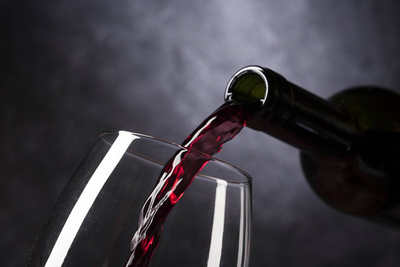
Measuring liquor bottles is a crucial first step to recording accurate inventory. And inventory data is critical to running a successful bar. Your inventory usage data will help you set par levels, calculate inventory variance, and pour costall of which can be bent towards raising a bar's profits.
Here's how accurate bar inventory management can help a bar become more profitable-
- Identify variance- Variance is defined as the difference between the amount of stock sold and the amount of stock depleted. Ideally, the two figures should tally. But there are several reasons why this seldom happens. Spillage, unauthorized free drinks, theft, and overpouring are some of them. Once you identify the root cause of variance, you can take the necessary steps to reduce it.
- Calculate pour cost- Pour cost or liquor cost percentage is the cost of a drink's ingredients divided by its sale price multiplied by 100. Most bars have an average pour cost of 18-24%. The lower the pour costs the more profitable a bar.
- Set par level for inventory- Par level is the minimum amount of liquor a bar needs to have on hand before fresh orders are initiated. Inventory Management helps you identify the par level for different types of liquors, based on usage trends. Setting a par level for each product can shrink sitting stock.

You have a great bar, with great customer traffic. Yet, your bottomline doesn’t look so good.
Could poor inventory be the problem? This article shows you how to measure liquor bottles for inventory the right way, so your profits look up.
How to Measure Liquor Bottles for Inventory- Tenthing
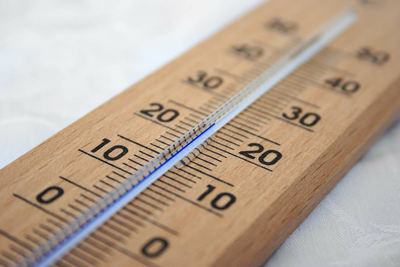
One of the most popular methods of measuring a liquor bottle during the inventory process is to eyeball the amount of liquid in the bottle and round it off to the nearest tenth. If a bottle is one-third full (30%) it would be noted down as 3/10 or 0.3. on a spreadsheet. This method is known as tenthing. Tenthing is a time consuming process and the least accurate way to take bar inventory .
Using tenthing as an inventory management measure can lead to the following problems-
- Subjective- Tenthing depends on a person's perception of the measure. If different people take inventory during the same inventory period, they may record different readings for the same bottle.
- Inaccurate- Since tenthing relies on human judgment, it can be difficult to measure bottles that don't come in a traditional size or shape. This may result in incorrect readings and inaccurate counts.
- Slow- As tenthing requires a person to manually check the amount of liquor in a bottle, the inventory process is very slow compared to automated management software systems. The stocktaker will have to ensure that bottle location (whether on the shelves or in the storeroom) is exactly mirrored in the inventory spreadsheet for convenience, or time will be wasted trying to match a bottle on a spreadsheet with its location in the bar.
- Manual transfer of data- Data recorded on a spreadsheet must be manually transferred to a computer database. This creates opportunities for transfer errors and consumes time, as the stocktaker has to keep checking if the transferred numbers are correct.
How to Measure Liquor Bottles for Inventory- Tenthing With Tech
But if you still feel tenthing is the inventory management method for you, you can use bottle measuring software to do the job. Once you download the inventory app on a mobile device you can either select the brand and varietal you want to measure from the app's database (some of these apps include product images). You can alternatively take a picture of the bottle yourself and save it in the database. Now, all the stock-taker has to do is point the phone camera to the bottle on the shelf and adjust the slider on the screen to match the liquor level of the physical bottle. The software's algorithm will estimate the quantity left over in the bottle.
Tenthing with technology works better than manual tenthing. The counting is faster. Bottles can also be tracked on the app by their location in the bar. Compared to the manual methodwhich is really anyone's guessthis technique is more objective, as a standard algorithm calculates stock levels for each bottle and not different pairs of eyes. The inventory software records the data and automatically calculates inventory. Based on the inventory count and par level, the software will also generate a report on what needs to be purchased.
But tenthing with technology is still not as accurate as other automated inventory systems. Some of the problems it presents are-
- This inventory software still depends on human judgement to mark the amount left over in a liquor bottle . A person can place the slider above or below the actual level, resulting in an inaccurate measure.
- Some liquors may not be used as often as others. They may only record a single pour for an entire inventory period. Because the quantity used is negligible, it's difficult to round off the measure to the nearest tenth. This throws off the count and the bar will not be able to track usage accurately.
What's the Best Way to Measure Liquor Bottles for Inventory?
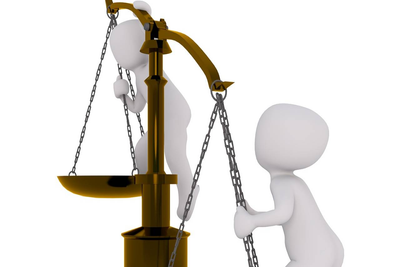
If you're still wondering what will give you an accurate measure of a liquor bottle for your inventory count , the best way is to physically weigh a bottle with the help of a weighing scale. You'll still have a small margin of error due to density change of the alcohol (conditional to ambient temperature), but it's still the most accurate way to measure a bottle. The density of a liquid can be simply explained as how thin/light or thick/heavy it is compared to water.
Here's a step-by-step guide to measure liquor bottles with a weighing scale-
- Get a scale, calculator, pen, paper, and a reference list of alcohol densities for the various alcohols in your stock.
- Weigh a full bottle. Calculate each product's adjusted fluid ounce size based on its density. The formula is- Bottle size (fluid ounces) x density = adjusted bottle size.
- Calculate the tare weight- full bottle weight - adjusted bottle size = tare weight.
- Place a bottle on the scale and record the weight. Bottle weight - tare weight = fluid ounces in bottle.
- To calculate usage- starting weight data - ending weight data = usage.
Keep track of new bottles added to the stock during the inventory period.
Invest in a good quality liquor inventory scale with Bluetooth. It will send liquor measures directly to an inventory app or spreadsheet without the need for you to type or write it down.
- To get an accurate liquor inventory count, it's important to first factor the density of alcohol. Different alcohols have different densities.
- Water has a density of 1 and any alcohol lighter than water will have a lower density. Liqueurs and cordials are heavier than water, so their densities will be greater than 1.
- Here's a tip- lower the percentage of alcohol, the more sugar the fluid contains, so heavier the liquid.

It's hard for a bar to keep track of its liquor, especially when its inventory is growing.
Know how to measure liquor bottles for inventory of any size with the modern bar’s toolkit. This article lays it all out.
How to Measure Liquor Bottles for Inventory With Modern Tools
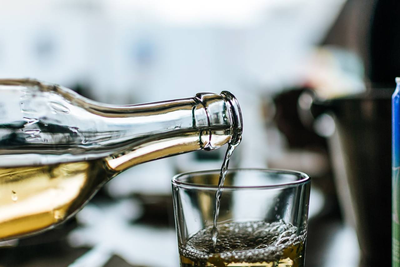
There are certain tools that can help manage bar inventory efficiently and accurately. They can be used in conjunction with an inventory app or software.
Hand-held barcode scanner- A scanner can help take inventory quickly. The stocktaker has only to scan the barcode on each liquor bottle for the bottle's details (brand name, varietal, dates of manufacture and expiry, net weight, etc) to enter the inventory software automatically. Using a Bluetooth scale, they then weigh the bottle and this measure too migrates automatically to the inventory spreadsheet or app.
Sticker method- A special sticker is placed on a new liquor bottle . During inventory, the sticker is scanned to find out how much liquor is left in the bottle. But this method is slow and the stickers are expensive. Also if you have a large stock, you will need a lot of these stickers, which will add to your costs.
Real time liquor inventory systems- This system uses stoppers on each liquor bottle to precisely measure how much liquor is poured every time a drink is made. This system provides liquor usage data in real time but it is not a comprehensive system. You also need to buy a stopper for every bottle, which can ramp up the cost.
- Overpouring
- Unauthorized free drinks
- Theft by employees
How to Measure Liquor Bottles for Inventory With These Top Software
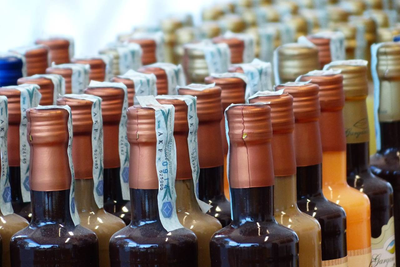
Of the several ways to track inventory in a bar, automated software or a bar inventory app is the best way. It can measure liquor stock and manage bar inventory more efficiently than any other inventory management system out there. An automated system or app not only measures your inventory, but also analyzes the data to produce reports and forecasts you can use to streamline and optimize operations.
Here are top 3 software solutions you can turn to for complete inventory management-
Zipbartender- This easy-to-use system can track waste and variance down to the drop. It facilitates integration of tools like Bluetooth scanners, weighing scales and liquor stoppers for a quick and accurate measure of bottles. It can also be integrated with other bar management software like a pint of sale or pos system. The superior algorithms of this app produce some of the most intuitive and intelligent data reports in the market.
Partender- This simple bar inventory app allows you to take bar inventory in minutes. You can tap the alcohol level on each virtual bottle, allowing the app to determine how much liquor you have in stock. The app lets you see how much was actually poured (with up to 99.2% accuracy) so you can track variance. The app will also prompt vendor orders when stocks are low.
BarVision- This inventory system uses alcohol pour spouts to track the amount of liquor poured out for every drink. The inventory system can match this data with pos system data to track waste and variance.

There are several methods that show you how to measure liquor bottles for inventory. But they’re not all equal.
This article reviews the different techniques to pick the best of the lot.

